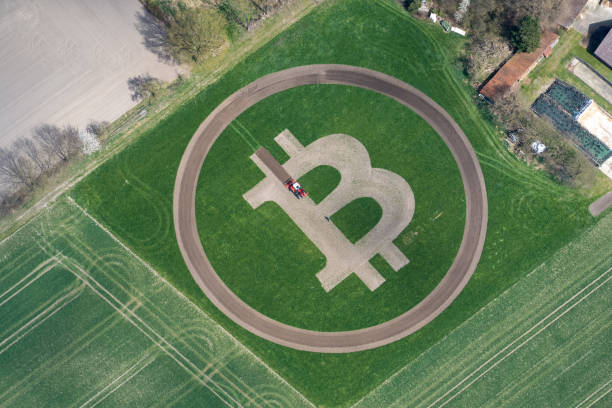The demand for cryptocurrencies has soared like few other trading commodities in the last ten years.
The cryptocurrency market cap has surpassed $3 trillion.
In early 2022, Bitcoin’s price nearly doubled from a year ago.
The rising prices of online currencies sparked demand, enticing millions to try crypto without understanding it or the blockchain..
Cryptocurrency mining consumes a lot of electricity.
Bitcoin and Ethereum, the two most popular cryptocurrencies, use mining to validate transactions and mint new coins.
Cryptocurrency, according to many social and environmental activists, is harmful to the environment and has a significant carbon footprint.
What is Cryptocurrency Mining?
Mining is the process of creating Bitcoin and other cryptocurrencies, as well as verifying transactions involving new coins.
Mining involves large, decentralized networks of computers that verify and secure blockchain ledgers recording crypto transactions.
Computers on the network are rewarded with new currencies in exchange for providing their processing power.
Miners keep the blockchain secure, the blockchain rewards coins, and the coins incentivize miners to keep the network secure. It’s a virtuous circle.
Crypto mining has two purposes.
It creates new cryptocurrency and confirms the validity of existing cryptocurrency transactions on the blockchain.
After completing the process of confirming a block of transactions, a miner is paid.
What do they get in exchange?
Innovative Tech Solutions, Tailored for You
Our leading tech firm crafts custom software, web & mobile apps, designed with your unique needs in mind. Elevate your business with cutting-edge solutions no one else can offer.
Start NowTo add to their wallets, newly created cryptocurrency.
Read: All You Need To Know About Cryptocurrency

Energy Consumption of Cryptocurrency Mining
The amount of energy consumed for Bitcoin mining cannot be directly calculated.
However, it can be inferred based on the network’s hash rate and the consumption of commercially available mining rigs.
Bitcoin, the most widely mined cryptocurrency, consumed 26.73 Terawatt-hours of electricity annually in 2020.
According to Cambridge Bitcoin Electricity Consumption Index, this consumption surpassed that of the Netherlands, Argentina, and the UAE.
Digiconomist estimated a total consumption of 204.5 Terawatt-hours based on energy use through May 27, 2022.
This equals about 2,159 kilowatt-hours per transaction, the same amount used by an average American household in 74 days.
Ethereum, the second-largest cryptocurrency, used 87.29 Terawatt-hours per year, comparable to Finland’s power consumption.
A typical Ethereum transaction used 210.16 kilowatt-hours, equal to an average American household’s 7.1 days of electricity use.
Ethereum developers are working on a low-energy proof-of-stake consensus mechanism, but this goal is still far off.
If prices and user acceptance rise, cryptocurrency mining’s energy consumption will likely increase.
Mining cryptocurrency is competitive; higher block rewards increase incentives to begin mining.
Higher cryptocurrency values indicate that crypto networks consume more electricity.
Read: What is Crypto Mining in Blockchain?
Why Cryptocurrency Mining Requires Energy
Digital currencies were designed to be difficult to mine, requiring significant processing power to prevent network control by a single entity.
This feature contributes to their decentralized nature, which means they are not controlled by a single entity.
Bitcoin and Ethereum use a proof of work (PoW) mechanism, requiring equation-solving to mine new coins and add blockchain information.
This method helps combat cyberattacks where one person creates multiple fake identities to control a network
The person with the most processing power has the best chance of winning the reward for solving equations first.
As a result, people are building larger mining rigs (or even networks of mining rigs) to process equations faster.
Because the quantity of energy utilized is proportional to the size of the mining network, mining new coins requires ever-increasing quantities of energy.
The amount of Bitcoin mining operations is also affected by the price and availability of electricity.
If the power in one country (or even a region of a country) is cheaper than in another, it makes economic sense to concentrate mining operations there.
Seamless API Connectivity for Next-Level Integration
Unlock limitless possibilities by connecting your systems with a custom API built to perform flawlessly. Stand apart with our solutions that others simply can’t offer.
Get StartedOne thing to keep in mind when discussing cryptocurrency’s environmental impact is that the amount of energy it consumes may not be precisely proportional to carbon emissions.
The energy mix—or what sources miners draw from—will affect the real carbon emissions of cryptocurrency mining, according to the Harvard Business Review.
Read: Regulatory Issues in Cryptocurrency Investing: A Primer
Effect of Cryptocurrency Mining on the Environment
In the United States, fossil fuels such as natural gas, coal, and petroleum account for around 60% of the grid’s electricity.
While it’s safe to assume that mining operations in the United States rely on fossil fuels for the majority of their electricity, this may not be the case in other countries.
Given Bitcoin’s massive energy use, it seems like grasping at straws to claim it isn’t contributing to greenhouse gas emissions in some manner.
The power plants required for crypto mining can have a negative influence on the ecosystem.
According to Columbia Climate School, the Greenidge Generation facility in Dresden, New York, draws millions of gallons of water to cool itself while operating.
Some of that water is discharged back into Lake Seneca at temperatures 30-50 degrees Fahrenheit over normal, thereby endangering species in the water.
Read: The Benefits of Diversifying Your Cryptocurrency Portfolio

Could Cryptocurrency Mining Use Less Energy?
Large-scale bitcoin miners are frequently found in areas where energy is plentiful, reliable, and inexpensive.
However, processing cryptocurrency transactions and minting new coins do not have to be energy-intensive processes.
The proof-of-stake (PoS) technique of authenticating cryptocurrency transactions and minting new coins is a non-computing-intensive alternative to cryptocurrency mining.
Instead, the permission to validate transactions and manage the crypto network is awarded according to how much cryptocurrency a validator has “staked,” or pledged not to trade or sell.
Other validation methods are being developed, such as proof of history, proof of elapsed time, proof of burn, and proof of capacity.
While Ethereum developers have indicated their desire to move away from proof-of-work, the Bitcoin community has not stated such a goal.
As a result, mining, along with its high energy costs, is likely to continue.
Conclusion
In conclusion, while cryptocurrency offers financial innovation, its environmental impact is undeniable.
The energy-intensive nature of mining, particularly for Bitcoin and Ethereum, contributes significantly to carbon emissions.
Though alternatives like proof-of-stake exist, widespread adoption remains uncertain.
As demand for cryptocurrencies grows, so will the environmental concerns.
The industry must explore and implement more sustainable practices to mitigate these effects.
Only then can the promise of digital currencies be fully realized without compromising our planet’s future.
Before You Go…
Hey, thank you for reading this blog post to the end. I hope it was helpful. Let me tell you a little bit about Nicholas Idoko Technologies.
Transform Business with Custom CRM & ERP Solutions
Elevate your operations with a CRM or ERP tailored for you. Let’s build the perfect solution that others can't replicate—crafted to match your business's needs like no other.
Get StartedWe help businesses and companies build an online presence by developing web, mobile, desktop, and blockchain applications.
We also help aspiring software developers and programmers learn the skills they need to have a successful career.
Take your first step to becoming a programming expert by joining our Learn To Code academy today!
Be sure to contact us if you need more information or have any questions! We are readily available.











